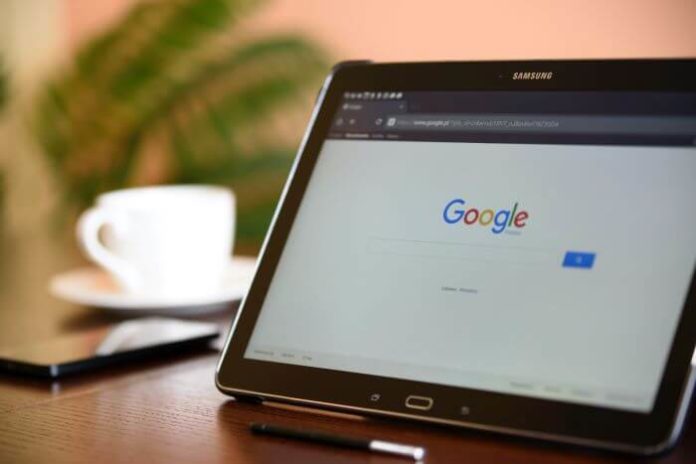When it comes to solidifying online presence, the more channels, the better. Gone are the days when businesses need to treat advertising channels as unconnected powers. There is no need to pit them against each other.
When it comes to Facebook and Google, looking at them as vital forces that work better together is more beneficial for e-commerce business goals. They can go hand in hand to advance the business’s objectives, whether it is generating leads and building the email list or driving website traffic.
The trick here is to use both channels to bring about their maximum potential. This will be beneficial in getting better marketing results.
Getting Facebook Ads and Google Ads to Perform Better Together
In e-commerce businesses, it is hard to keep up with the competition. But with the advent of social media and other online platforms, one has a fighting chance. While many may wonder whether to focus their efforts on either Facebook or Google, two of the giant online platforms in the digital world, it is imperative to remember that one can utilize them together to achieve a far better e-commerce performance.
Facebook is where users who want to connect with family and friends are. And one can find a lot of potential customers there. Users may also search for the best site to buy Facebook followers & likes to increase the engagement. The thing is, they are at the top of the funnel, which means they are not actively looking for a certain product or service, so a Facebook ad may or may not reach its intended audience.
On the other hand, Google runs ads for people searching for particular products or services. Of course, it is still possible to boost brand awareness on this platform, but one can better harness it for those down the funnel.
When put together, they can usher in a wealth of benefits for an e-commerce business.
Generate Searches with Facebook, Generate Leads on Google
The golden rule when it comes to fusing the strengths of Facebook and Google is to make Facebook the stepping stone to gaining traction. The success of an e-commerce business often starts with brand awareness. Facebook is the best platform to generate interest and initiate conversations around a brand.
Reaching out to a colder audience is easier on Facebook. It is also a good platform to drive searches for a brand on Google. An audience’s attention is piqued if they see the ad on Facebook, and this interest will lead them to search for the brand on Google.
Facebook allows brands to introduce themselves and the products they offer. It is also a good starting point for potential customers to learn more about its offering. Then this can be followed through with Google.
On Google, a business can close the deal with a cold customer who has warmed up to the brand. It will be easier to convince them of the benefits of the products since they are now familiar with the brand.
How can that happen? The following are the best practices:
- Using the business name as one of the keywords in the Google search ad campaigns helps a brand be visible on top searches when prospects lookup for it after seeing a Facebook ad.
- Complement Facebook ads copy with Google advertisements. This shows coherence and consistency in the marketing message, and prospecting clients would not feel duped when they finally searched the product on Google.
- Using attention-grabbing headlines that will stay on top of people’s minds helps increase brand recall.
If prospects search for the brand on Google after seeing its Facebook ad, it shows they’re interested in the business and what it offers. It could be that they are already in the consideration stage. They might be weighing their options by learning more about the brand and comparing it to others.
Retargeting Users on Facebook and Vice Versa
People who have seen a business’s Google ads have probably clicked on links and got directed to the brand’s website and shop. They might have explored the pages, learned more about the brand and decided that it offers interesting products.
They might be tempted to add to the cart when they like what they see. However, before they have finished the checkout process, they have closed the tab. It might seem like the brand lost them forever, but the truth is that these customers can still be encouraged to go back to check out.
To do this, brands must gather data on the website visitors and their corresponding behaviors. This will show who added items to their cart but did not check out the products, or who has explored the products but left after a while. They can be retargeted on Facebook using Dynamic Ads.
With Facebook Dynamic ads, a brand can personalize the ads and show the right products to people who have expressed interest in the website or shop. Business owners can upload a catalog of products and set up a campaign. The whole process is subsequently automated.
The process is called cross-platform retargeting, and it helps brands maximize the audiences from the two platforms.
Find Similar Audiences on Facebook and Boost Both Platforms
Facebook is known for its lookalike audiences. This unique targeting feature allows for the creation of audiences who are similar to the current audiences, allowing the business to reach even more people who are more likely to engage with the brand’s ads. Businesses can create lookalike audiences by uploading their database, website visitors, and even those who liked the brand’s Facebook page or those who interacted with the ads.
The power of lookalike audiences can be exploited by creating several of them on Facebook and using them when running website ads. Brands can then create remarketing lists on Google Analytics based on the UTM tags of the lookalikes ad sets.
The best part is that brands can run a Google search campaign using “top of the funnel” keywords, but the ad groups in this campaign must be set first. This will ensure that the user belongs on the marketing list, including those who visited the site from the lookalike ads on Facebook.
Utilize Both Platforms for Engagement and Retention
Both platforms have massive user populations that can engage with a brand. Businesses would want them to keep coming back. Some of the best ways to amplify engagement and retention with the help of Facebook and Google ads include the following:
- Cross-selling by showing recent customers the new products to encourage additional purchases
- Targeting users who recently bought from the shop by offering them deals and discounts
- Creating ads for last year’s seasonal customers with this year’s new product lines
- Reaching out to customers who lapsed and offering them good deals to bring them back in
Just because someone purchased from a brand once does not mean they won’t purchase from the same one again. It is less expensive to retain existing customers than acquire new ones. Running ads on Google and Facebook means a brand can constantly remind them of its existence, reinforce the messaging, and cultivate their loyalty to the business.
Wrapping It Up
As businesses and marketers, it is important to look at the bigger picture when it comes to online advertising strategy. It can start with a change of approach. Instead of looking at the Google-versus-Facebook angle, it is more advantageous to allow both platforms to bring the best out of each other. Utilize Facebook to enhance Google Ad strategy, and everything else will come into place. While hiring a reliable marketing agency to do the design of your business site’s appearance can be a good option too.
However, remember that it won’t always guarantee 100% success. It still needs constant optimization and cultivation. Ultimately, the strategy of harnessing their power can make a world of difference. Growing your e-commerce business can be a breeze if brands know how to use Facebook and Google Ads to their advantage.








